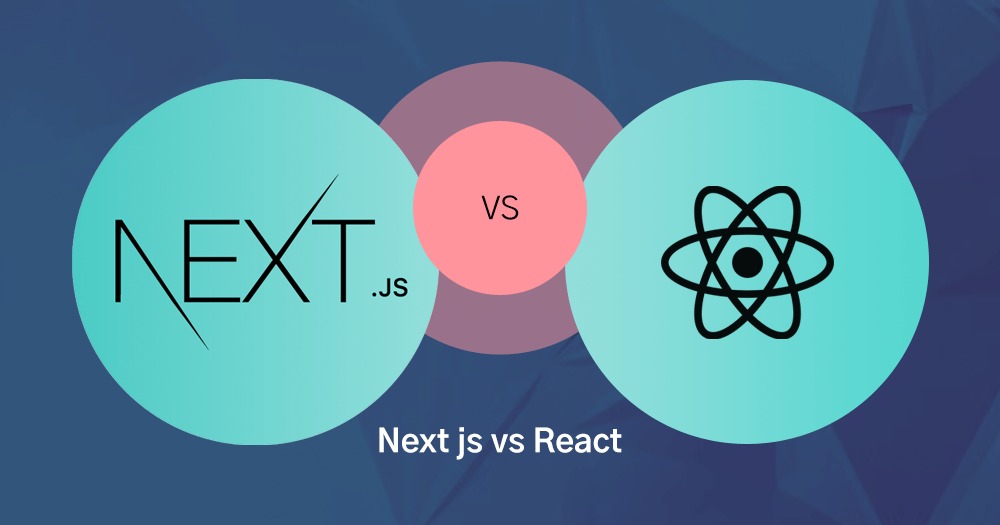"From React to Next.js: The Shift in Web Development"
 Abdul Rahman Moin
Abdul Rahman Moin
What is React?
React, introduced by Meta (formerly Facebook) in 2013, revolutionized frontend development with its component-based architecture and virtual DOM. It simplifies the creation of dynamic user interfaces and large-scale applications. React's JSX syntax integrates HTML and JavaScript seamlessly, enhancing code readability and component management. Its popularity soared due to its efficiency in rendering updates and managing state, making it a favorite for companies like Airbnb, Lyft, and Dropbox.
What is Next.js?
Next.js is a React-based framework that simplifies the development process by offering tools and conventions that allow developers to build production-ready applications with minimal configuration. Created by Vercel, Next.js has gained immense popularity in recent years for its built-in features like server-side rendering (SSR), static site generation (SSG), file-based routing, and automatic code splitting.
Next.js removes the need to configure complex tools and libraries, allowing developers to focus on building features rather than setting up infrastructure. As a result, it has become the go-to choice for developers looking for speed, performance, and scalability.

The Rise of React
React quickly became a favorite in the developer community for good reasons:
Component-Based Architecture: React introduced the concept of reusable components, allowing developers to break down complex UIs into manageable, independent units. This modular approach made both development and maintenance more efficient.
Virtual DOM for Performance: React’s virtual DOM significantly improved rendering performance. By updating only the parts of the UI that changed, React ensured smooth, fast, and responsive applications, a clear advantage over traditional full-page reload methods.
Strong Community Support: Being open-source and backed by Facebook gave React a massive user base. It quickly developed a robust ecosystem, offering thousands of libraries, tools, and resources, helping developers solve complex challenges.
Flexibility and Ecosystem: React is a "library," not a full-fledged framework. While it focused solely on building user interfaces, its flexibility allowed developers to integrate it with different tools for routing, state management, and data fetching. This freedom made React a powerful choice for developers who preferred custom-built solutions.
Wide Adoption: Companies like Facebook, Instagram, Airbnb, and Netflix adopted React early, driving its reputation as the go-to technology for modern web applications. This created an industry-wide demand for developers with React skills, further boosting its popularity.
Why Next.js Is Gaining Popularity
While React thrived, developers encountered certain limitations, especially when it came to SEO, server-side rendering (SSR), and optimizing performance for large-scale apps. This is where Next.js entered the scene, offering several key features that address common developer challenges:
Server-Side Rendering (SSR): One of the main reasons Next.js is so popular is because it provides server-side rendering out of the box. This means that pages are pre-rendered on the server before being sent to the browser, significantly improving page load speed and making apps more SEO-friendly.
Static Site Generation (SSG): Next.js allows developers to generate static pages at build time, making it a great choice for blogs, marketing websites, and e-commerce platforms. Static pages load faster and are easily cached by CDNs, improving performance and scalability.
File-Based Routing: Unlike React, where developers have to rely on third-party libraries like React Router, Next.js offers a simple and intuitive file-based routing system. This approach streamlines the process of creating new pages, especially for large apps.
Built-In Performance Optimizations: Next.js includes automatic code-splitting, image optimization, and font optimization. These features are designed to improve performance out of the box, reducing the need for manual configurations or external libraries.
Full-Stack Capabilities: Unlike React, which only manages the frontend, Next.js empowers developers to build full-stack applications. With its API routes and server-side functions, Next.js enables developers to handle backend logic, database queries, and integrations within the same framework.
SEO-Friendly: Next.js’s SSR capabilities make it easier for search engines to crawl and index pages, which is crucial for businesses relying on organic traffic. This SEO-friendliness has become a major advantage, especially for marketing websites and content-heavy pages.
TL;DR: React vs. Next.js
| Features | React | Next.js |
| Library or Framework | Library | Framework |
| SEO-friendly | No | Yes |
| Built-in routing | No | Yes |
| Mobile app development | Yes | No |
| Server-side rendering | No | Yes |
| Built-in optimization tools | Some (useMemo, lazy loading, etc.) | Yes (Prefetching, code splitting, image & font optimization) |
| Current Active User Base | Over 10 million developers globally | Rapidly increasing in popularity but currently has fewer active users than React. |
| GitHub stars | 216k | 116k |
Conclusion:
React was popular because it addressed the challenges of modern web development with its component-based architecture, virtual DOM, and flexibility. However, as the web evolved, developers needed a solution that not only handled the frontend but also offered server-side rendering, performance optimizations, and better SEO.
Next.js stepped in to fill that gap, providing a comprehensive framework that makes developing production-ready applications more efficient. While React remains a key player in the JavaScript ecosystem, Next.js is now becoming the go-to solution for developers who need a complete framework that optimizes both the frontend and backend experience.
Ultimately, React laid the foundation, and Next.js is now building on top of it, pushing the boundaries of what’s possible with modern web development.
Subscribe to my newsletter
Read articles from Abdul Rahman Moin directly inside your inbox. Subscribe to the newsletter, and don't miss out.
Written by
